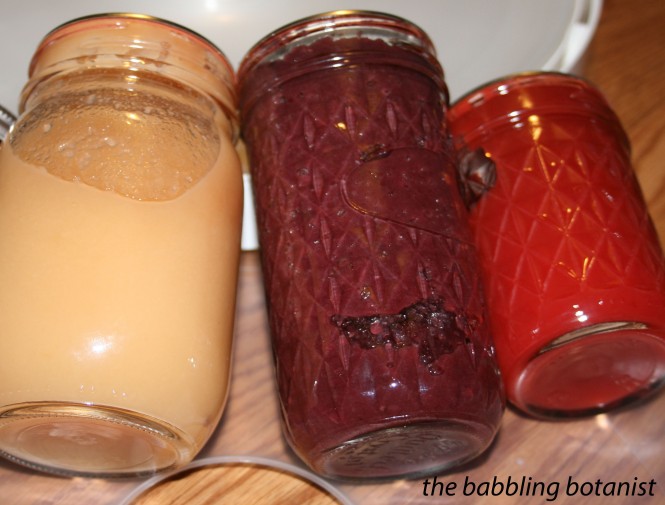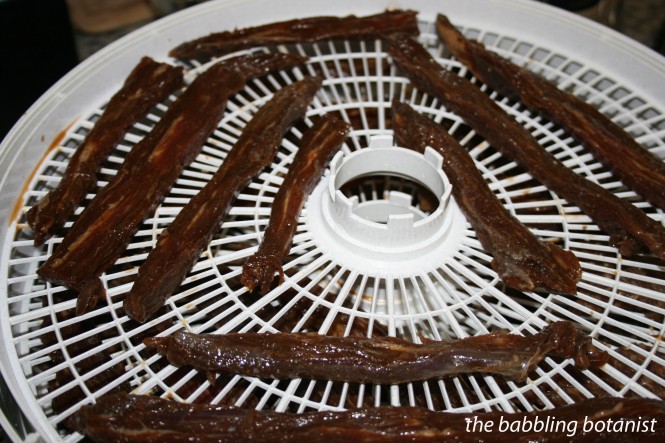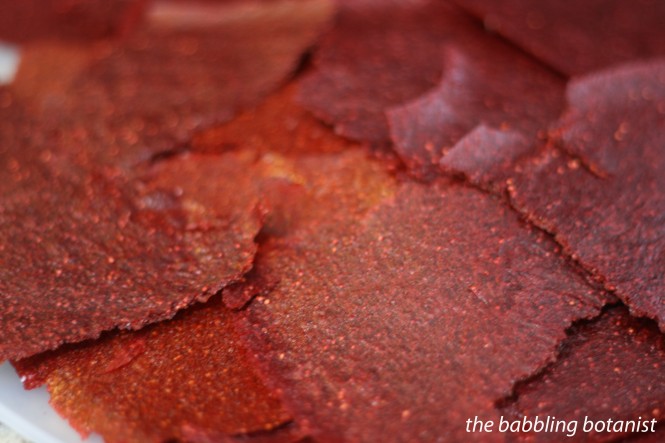If you love food preservation as much as I do, you’ve probably given some food related gifts to family and friends in the past. Mostly I’ve given people things like jams, jellies and pickled goods I’ve made, and decorated cutely as below, but there are so many other gifts that we can give from the kitchen! So, with the holiday season coming up, the Master Food Preservers offered a class called “Gifts from the Kitchen” offering some inspiration and ideas for gifts for the various people in your lives. Teaching this class was a blast and people really had a good time so I wanted to share some of the ideas here that we talked about, and hopefully inspire you to get thinking about some gifts you might like to make in the next month. I thought I would get this post up today in honour of “cyber Monday”, so that maybe we can also be thinking of some homemade gifts on this massive shopping day. Maybe you could make something to accompany or replace a purchased gift, and I’ll offer a couple ideas here to pair a purchased gift with a homemade one.

The most common gifts from the kitchen of course are canned goodies that you’ve made with love. I like to decorate them with little pieces of cloth, which are actually just quilting cloth squares or scraps from the craft store. Tie a cute ribbon around it and grab some cute tags, and presto gifto! However, when gifting preserved items there are a few other things you should remember. Of course always make sure you are following safe, tested recipes. If you want to play with things not tested that’s your own business, but always be safe when gifting items. It’s a nice touch to add an ingredient list and any information you think people may be interested in knowing, such as when the food was canned, how it was canned, whether it’s low sugar, things like that. It can be nice to put your initials on there or something too so people remember who it’s from (I know people trust my canned goods but maybe not everyone’s). If you want to give canned gifts but don’t have anything on hand, we talked about a few different things that you can still preserve now, which are pictured below. These include, pepper jellies, citrus jellies, jams or marmalade, cranberry jams or jellies (or check out the cranberry mustard I just posted), apple butters and applesauce. The green tomatoes are probably done for most of you now, but green tomato salsa is also an option if you still have some kicking around. There are also a number of other mustard recipes in the Ball Complete Book of Home Preserving that look really intriguing and can be prepared at basically any time of year, so I plan to try out some more of those soon too. I think it would be really nice to give a couple different ones. The 4 oz jars get harder to find in some areas this time of year, but luckily they are still online here for about the same price.
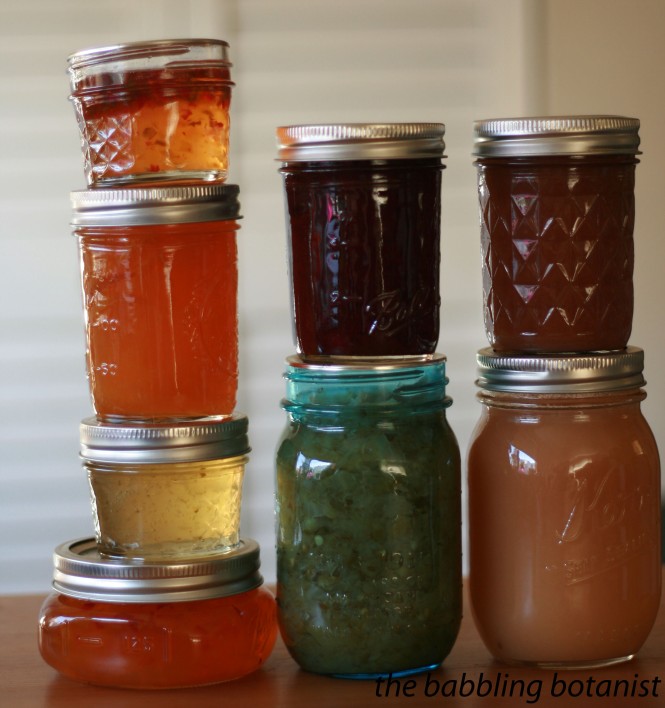
Great! What else can we gift? Here is a sampling of some of the things we talked about or made in class, and I’ll talk in a bit more detail below about each of these. Here we have, from left to right, lime jelly and pepper jelly, a dry bean soup mix, a snowman of hot cocoa, flavoured vinegars and two different spice rubs in the front.

We had a number of stations where people got to make items to take home, and my station was hot cocoa. You had a couple options on how to arrange your cocoa into the jar, but if you search the internet there are a ton of other ways to do it too, and they are so cute and creative!

I did mine as a snowman (the guy on the left). I got this idea from my nana, who made them a number of years ago for Christmas gifts, but I made mine a little differently, using just one canning jar. All I did for mine was mix 1 part cocoa powder to 2 parts sugar, but you can also follow other recipes with dried milk in them as well. The one we did in class was 1/2 cup cocoa powder, 1/2 cup dried milk, 1/2 cup sugar, pinch of salt, 1/4 cup chocolate chips and 1/4 cup (or to fill the jar) mini marshmallows. Then, make a head out of marshmallows and decorate the jar with a scarf, face and hat made of cut out construction paper and a painted band and lid. Adorable. One of the girls in the class made this girl snowman who became buddies with mine.

Get creative and have fun with it! All I did was spray paint lids and bands black, draw on a face and glue on some buttons and a scarf and he turned out adorable.

Alternatively, you can make some cute layers in the jar or bag you put it in.

Another station that we did was a dried soup mix. Simply layer a variety of beans in a jar. We did equal parts kidney beans, white lima beans, black beans, garbanzo beans, pinto beans, great northern beans, small red beans, black eyed peas, barley, and then half as much of the split peas and lentils. To fit in one pint jar, you need 1/4 cup of each (about 1/8 for the lentils and split peas). We then also included a spice packet, and here’s an example of what it could contain: 1/4 cup minced dried onion, 2 tbsp dried celery (we dried our own to be even more homemade), 1 tbsp bouillon (vegetable, beef, or chicken), 2 tsp dried basil, 1 tsp dried oregano, 1 tsp ground red pepper, 1 bay leaf, 1 tsp salt, 1/2 tsp black pepper.

If giving a gift like this, it would also be nice to include some sort of recipe on how you would recommend preparing the soup. Including a recipe such as this one would work great. I prepared the spice packet to match the spices in this soup, but adjust this however you enjoy your bean soup, and share a family recipe or something. Additionally, a nice pairing to a gift like this could be your favourite cookbook. They turn out quite pretty when layered in the jars rather than blended.
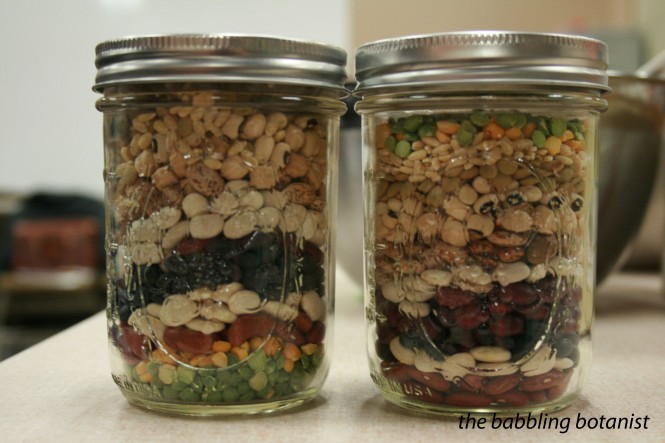
Another station we did was preparing spice rubs. The one pictured is a steak rub adapted from Family Circle Magazine (November 2012). It contains 1 tbsp kosher salt, 2 tsp smoked paprika, 2 tsp dried oregano, 1.5 tsp dried minced onion, 1 tsp dried minced garlic, 1/2 tsp ground cumin, 1/2 tsp red pepper flakes.

Simply stir all the ingredients together and package it in a cute way, such as in a little baggie or jar with a bow. Be sure to include the ingredient list, and perhaps a suggested usage. For example, Steak rub: rub 1 tsp spice mix onto both sides of a 1.5 pound steak and grill or broil as desired. A great idea for gifting this might be give it to someone who loves grilling, and include a book on grilling along with the homemade spice rubs.

Another rub that we did that is really delicious is a lemon cumin rub. It contained: 1/4 cup ground cumin, 2 tbsp grated lemon peel, 2 tbsp paprika, 2 tbsp ground cardamom, 1 tbsp ground cinnamon, 1 tbsp coarse ground black pepper, 1 tbsp cayenne pepper and 2 tbsp dried oregano. This rub is great on chicken. To prepare, dip meat in a mixture of 1 tbsp brown sugar to 2 tbsp water, then apply 1 tbsp of the rub. Let it stand in the fridge for 4-6 hours, then grill. If you are going to do spice rubs though, it can get a little spendy, so buying in bulk is always a great idea. Use home dried herbs too where you can for an added homemade touch. Some things you won’t have though, and they can be hard to find cheap (or at all) so I really like to get things from Mountain Rose Herbs. They have a huge herb selection and they also have bulk discounts if you are buying a ton. They also have some really fun salts and peppers which could also by themselves make fun gifts. Fill a few different 4 oz or 8 oz jars with a variety of different salts and peppers and decorate them for someone who loves to cook.

The final station was an apple crumble recipe from The Dehydrator Bible (which itself is a great gift). This is a great gift for a camper and includes 1/2 cup dried apple slices (dry your own at home in your dehydrator), 1 tbsp brown sugar, 1/4 tsp dried lemon zest (optional), 1/4 tsp ground cinnamon, 1/2 cup crumbled oatmeal cookie (or we used granola cereal). Place the oatmeal in one bag and the rest in another, and place in a foil tin for campfire baking. This one only stores well for a month or so, so keep that in mind. To include serving instructions, add a tag that says to serve you will add 3/4 cup of water to the apple mixture, and let stand for 15 minutes. Cook for about 10 minutes over the fire (or on the stove on low) and once apple reach the desired softness, add the cookie crumble and serve.

All prepared in its tin.

Those are all the gifts from the kitchen that we made in class, but there are numerous other things that you could gift. One example I posted earlier was flavoured vinegar. A lovely pairing to this would be a salad dressing mixer. I have a very similar one to the one linked here (couldn’t find the exact one) and I love it. When I try and mix salad dressing by hand I often find I get too much oil onto my salad and not enough vinegar, so this is one of those silly toys I once bought myself. There are also some fun bottles with recipes on them, but I can’t vouch for the recipes so much because I always make my own with a lot less sugar.

Another thing I did last year to give some of my favourite things (with a jar theme of course) was to give people my favourite teas in a ball jar. Pick up some different loose leaf teas from Mountain Rose Herbs, or your favourite local tea shop, and perhaps include a little tea ball with it. OK, that’s all I have for now, and I need to get to bed, so I hope you are feeling inspired! I just wanted to end with a couple of final thoughts for purchasable gifts for the culinarily (ya that’s not a word) inclined people in your life. I really enjoy The Flavor Bible, which is a book full of tons of inspiring flavor combinations. It’s not recipes, but basically a fun index of the best flavor combinations for every type of food out there. It’s inspired a number of great recipes for me and was a great birthday gift last year. Of course for the canners in your life I am always a fan of the classics for safe and tested recipes, which are also of course delicious and amazing: The Ball Complete Book of Home Preserving, or the smaller Ball Blue Book. Or the newly released (I just got it finally yay!) So Easy to Preserve. Last but not least, my second favourite way to preserve is dehydrating, so I would recommend both dehydrators and The Dehydrator Bible as excellent gifts. Happy gifting, thanks for reading, and enjoy your cyber Monday! Remember as always if you purchase something from one of my links I’ll receive a small amount of commission in return (see “About the Blogger” for more info), but as always I only link to products I love and truly recommend so I thank you in advance if you decide to invest in any of these items.









